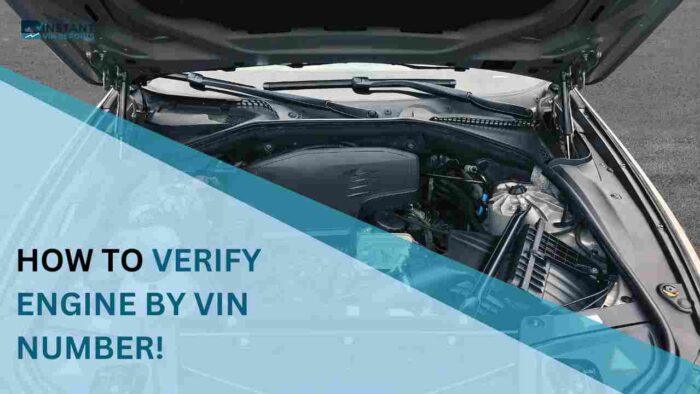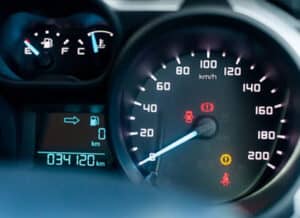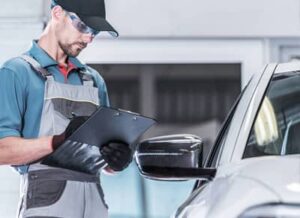Do you ever wonder what engine your car has? Maybe you’re trying to sell it, or perhaps you need to replace parts. Not knowing your engine type can lead to frustration. Luckily, you can find out the engine details by using your Vehicle Identification Number (VIN).
In this article, we’ll show you how to check your engine size by VIN and introduce a tool that makes the process easy. So let’s get started!
What Is a VIN?
The VIN (Vehicle Identification Number) is a unique code assigned to every car. It acts like a fingerprint for your vehicle and contains important information, including its make, model, year, and engine type. It is 17 characters long and a mix of numbers and letters.
The VIN is on various parts of the car, like
- On the driver’s side dashboard, near the windshield
- On the driver’s side door frame
- Inside the engine compartment, near the firewall
- On your vehicle registration or insurance documents
Knowing how to read your VIN is essential for vehicle identification and can save you time and hassle in the long run.
RELATED: How to decode a 13-digit VIN number
Everything You’ll Need To Check Engine Size By VIN
To check your engine size by VIN, you’ll need two things
- The VIN number
- A VIN decoder
A free VIN decoder provides detailed information about your vehicle, including the engine specifications. It’s user-friendly and designed to give quick answers without the hassle of sifting through endless paperwork or websites.
Here’s How To Check Engine Size By VIN
Finding your engine size by VIN is straightforward. Follow these simple steps, and you’ll have the information in no time!
- Start by locating your VIN. You can usually find the VIN number without a car or in other locations related to your vehicle.
- Once you have your VIN, you’re ready to proceed.
- Enter Your VIN into the VIN decoder tool. The tool will scan databases and pull up all the information about your vehicle’s engine, such as the engine size, type, and specifications.
If you’re buying a used car or need to dig up the history of a used car you just bought, take a step further to get the vehicle history report to uncover past records like title, accident history, theft records, lien records, ownership history, and more.
The comprehensive report can help you make informed decisions, whether you’re buying a new part, reselling your car, or just curious about a vehicle’s history.
Get Help With Checking Engine Size By VIN
If you’re unsure about your car engine size, simply use the free VIN check tool or get the car’s window sticker by VIN to access a wealth of information regarding a car’s engine details, specs, features, packages, MSRP, MPG and more.
Pro Tips to Check Engine Size By VIN
When checking your engine size by VIN, keep these tips in mind:
- Ensure Accuracy: Make sure you enter your VIN correctly. One wrong digit can lead to inaccurate results. It’s easy to make a mistake when typing, so double-check your input.
- Use Reliable Sources: The internet is full of misinformation. Using a reliable tool like our VIN check tool ensures you get accurate details. You want to trust the information you receive.
- Stay Organized: Keep your engine information, such as the size, handy for future reference. Write it down in a place where you can easily find it later. You never know when you might need to check your engine size again!
- Understand the Vehicle History Report: Once you generate a history report, take the time to read it thoroughly. Understanding the details helps you spot any potential issues or highlights you need to address.
Conclusion
Checking your engine size by VIN doesn’t have to be a daunting task. With a few simple steps and the right tools, you can easily find the information you need. Remember to keep your VIN handy, and don’t hesitate to use our VIN Check tool, which helps simplify the process and gives you comprehensive information about your vehicle.
Whether you’re upgrading parts, selling your car, or just satisfying your curiosity, this knowledge will serve you well.
Frequently Asked Questions
My Car Doesn’t Have A VIN. What Do I Do?
Every vehicle produced after 1981 should have a standard VIN. If you can’t find it, check under the dashboard or the driver’s side door. If you have a classic vehicle, it might not have a VIN of less than 17 digits. In that case, you can contact your local Department of Motor Vehicles (DMV) for guidance. They can help you determine the next steps.
What Else Can I Do With My VIN?
Your VIN is a powerful tool. Aside from checking engine size, you can:
Discover Your Car’s History: This includes information about previous accidents, repairs, and service records. Knowing your car’s past can inform future decisions.
Check for Recalls: Recalls can impact safety and performance. Your VIN can tell you if your vehicle is subject to any outstanding safety recalls.
Determine Original Manufacturer Specifications: This includes details about the original engine, transmission, and optional features. Knowing the specifications can help you when upgrading parts or making modifications.
Can I Change My VIN?
Changing a VIN is a complex process. It can raise legal concerns and is often illegal if done maliciously. Contact your local DMV for guidance if your VIN needs to be changed. They will provide the proper steps if a legitimate reason exists, such as correcting an error.










